Last October, director Hiroshi Nagahama (Mushishi, The Reflection) and voice actress Uki Satake (QT in Space Dandy) were invited to Japan Expo Orléans, an event of a much smaller scale than the main event they organized in Paris. I was offered to host two of his panels; one focused on his career on Saturday and another about his collaboration with Ms. Satake on Sunday. Mr. Nagahama was very eager to talk about his work to French fans and brought a lot of design sheets, storyboards, and other production materials with him so that we could discuss them on stage. We spent the evening before the panel selecting which ones we should show while talking about his work. During the whole weekend, the director was very supportive of Uki Satake, cheering her on on every occasion.
We hope that we were able to give a glimpse at what makes Hiroshi Nagahama’s and Uki Satake’s work, even though we missed time to talk about some aspects of their careers. I regret that we were not able to talk about Aku no Hana and Uzumaki, but I am convinced this won’t be the last opportunity!
This article would not have been possible without the help of our patrons! If you like what you read, please support us on Ko-Fi!
You’re famous for your directorial work, but first, I wanted to go back to your beginnings as an animator at Studio Madhouse. Can you tell the audience about how you chose to work there?
Hiroshi Nagahama: Well, back in 1987, when I was still a high schooler, I watched Wicked City. Of course, it was quite a mature movie and pretty violent, too… I wouldn’t recommend watching it around that age, but I did anyway, so it had quite an impact on me. The fear I felt opened my eyes to all the possibilities that the realm of animation could bring to the table, so that’s how I ended up wanting to pursue a career in animation at Madhouse.
You did in-between work on series such as Yawara! and Record of Lodoss War. Do you have anecdotes about that time as a junior animator?
Hiroshi Nagahama: Of course, I would have lots to tell. Lodoss had a huge impact on my career. There are some bad memories, such as when I had to draw a dragon on a giant piece of paper, only getting paid ¥210 for it, but thankfully, the support I received from my more experienced coworkers pushed me forward in the field.
Right before the time where you left Madhouse, you got assigned to work on The Cockpit, an adaptation of 3 stories from Leiji Matsumoto’s Battlefield. You worked on the Slipstream segment as the mechanical designer under the supervision of your inspiration, Yoshiaki Kawajiri.
Hiroshi Nagahama: Yes, I’m truly glad I got to work under Wicked City’s director. A dream come true! It was also the first time I was in charge of drawing machinery such as those planes. On top of it all, I was adapting Leiji Matsumoto’s work, an expert in this field, so I had big shoes to fill. Thanks to his guidance, I truly learned a lot. He even lent me reference books to study.

After leaving Madhouse, you started doing freelance work. You had the opportunity to work under Kunihiko Ikuhara on Utena’s mechanical design. You designed the Akio car, too, right?
Hiroshi Nagahama : That’s right! While working on Utena, Ikuhara struck me as a true genius. While I didn’t design the characters, I was in charge of all the rest. Machines, furniture, you name it. I also have the impression that I must’ve stepped up working on it. In a sense, my work on it was kind of an anomaly: People in charge trusted me enough to try my hand at a lot of different positions I wasn’t necessarily trained in. This trust let me build my skills in varied fields. I didn’t really aim for this, though. I got called in to work on quite a variety of projects, and I guess my reputation as an all-rounder started preceding me.
You then went on to follow director Ikuhara onto the Utena movie. At some point, Utena transforms into a car, which has become quite an iconic scene. How did you handle this work of designing the car?
Hiroshi Nagahama : Quite a question! Well, Utena is about revolution, right? Ikuhara’s directorial style could be pretty hush-hush. He didn’t usually explain everything all at once. One day, he came to me and told me Utena was going to shapeshift into a car. I must admit, I was pretty stunned! He simply refused to tell me more, even when I asked about the type of car he had in mind! Thankfully, he ended up caving in by telling me that he envisioned something like the Batmobile. He wanted an Utenamobile! It still was kind of fuzzy, as my first tries were too close to Batman’s car. To push me further, Ikuhara told me to imagine how the Batmobile would look if Utena was Batman herself. I was finally able to design something we both agreed on. Even today, I still think this back-and-forth taught me a lot about how to transmit ideas through mechanical design. Ikuhara kept asking questions about this chair or that table’s height, and it helped me understand that every minute detail can show a director’s intentions.

You even worked with 3D modeling for a bit, right? This castle, for example.
Hiroshi Nagahama: I truly did a bit of everything, didn’t I? I really learned lots!
Going forward a few years, you became chief director on Jubei-chan 2. Could you explain the difference between this chief director credit and a regular director credit?
Hiroshi Nagahama: Well, frankly, in this one case, there wasn’t! I’m even quite surprised you’re bringing up Jubei-chan at all; I didn’t expect it. Akitaro Daichi, Jubei-chan’s creator, asked me to direct the sequel. At first, I wasn’t sure, as I was in the middle of pre-planning for my first directorial work on Mushishi at the time. I ended up accepting the offer, as long as they wouldn’t credit me as the director, because my first credit as a series director had to be Mushishi. That’s why there wasn’t really much of a difference: I wore both hats! Daichi is still credited as Jubei-chan 2’s director, but he was mainly focused on the writing. I’m really proud of this production. Please check it out if you’re interested!
On Jubei-chan 2, you had the opportunity of working for the first time alongside Yoshihiko Umakoshi, known for his character design work on Magical Doremi and, more recently, My Hero Academia. After Jubei-chan, he also worked with you on Mushishi and The Reflection. What would you say are his best qualities?
Hiroshi Nagahama : M. Umakoshi is quite prolific in our field! He’s truly everywhere. You can also find his touch in works such as Berserk and Heartcatch PreCure. He’s really, really talented. The first time I saw him drawing, I thought that he was so much ahead of the curve that I’d better quit. If I could, I’d work with him all of the time, but he’s been really busy! He only joined Jubei-chan for the second season, just like myself. A natural fit! If not for him, I wouldn’t have bothered. Such a good fit that his initial sketches didn’t need any corrections at all. When we were done with this project, we had lunch together and bonded further. Now, I can’t imagine my career without him.
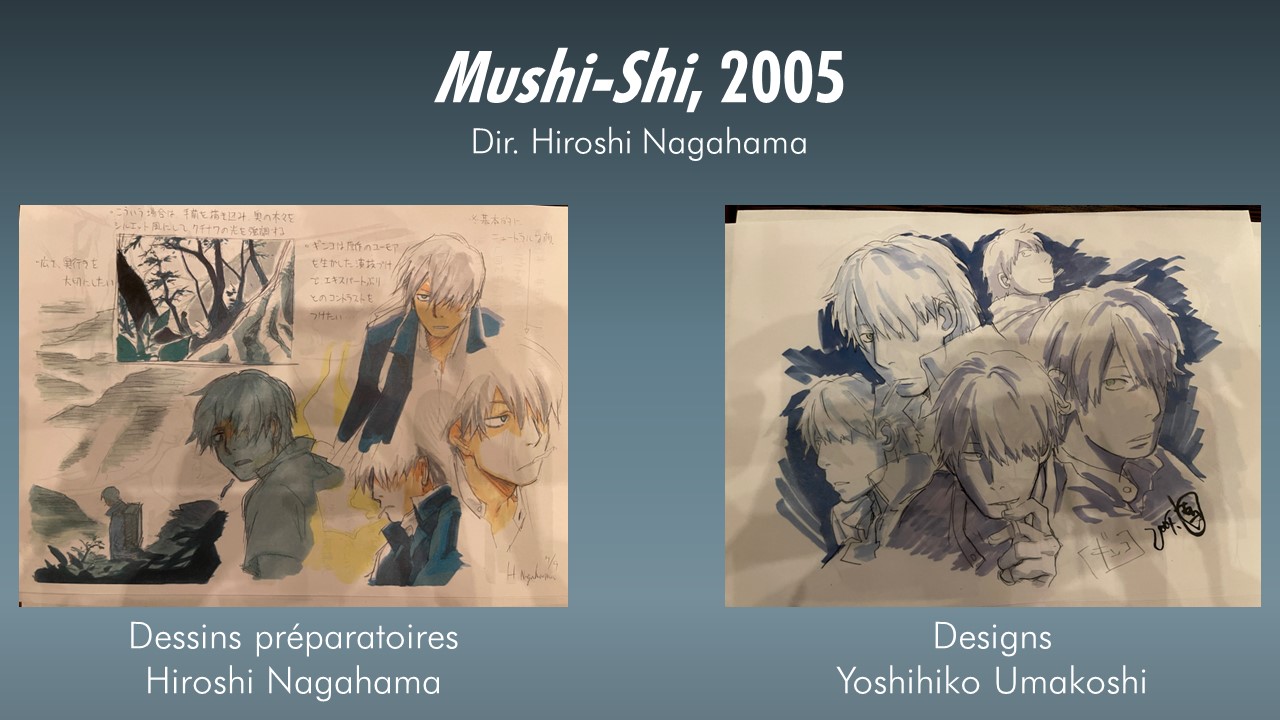
Let’s talk about Mushishi now, don’t we? Thank you for bringing some preparatory material for this event, M. Nagahama. Here are some of your works alongside some of M. Umakoshi’s. Mushishi is a manga adaptation. As the director, what was the most important thing in your eyes?
Hiroshi Nagahama: I’ll start by saying that Mushishi is a great series, and I’d like everyone to check out the manga if you haven’t yet. Yuki Urushibara, the mangaka, put a lot of small but very important touches in this manga. That’s why I was really interested in adapting it. I promised something to Ms. Urushibara: I wanted to keep all of these quirks as best as I could since a lot of them usually get sanded out by the animated version. When it was decided I’d come here today, I contacted Mushishi’s editor, and they told me France really enjoyed the series. Thank you very much! It might be a bit more complex to follow than what the general public is used to, but it’s really important to me.
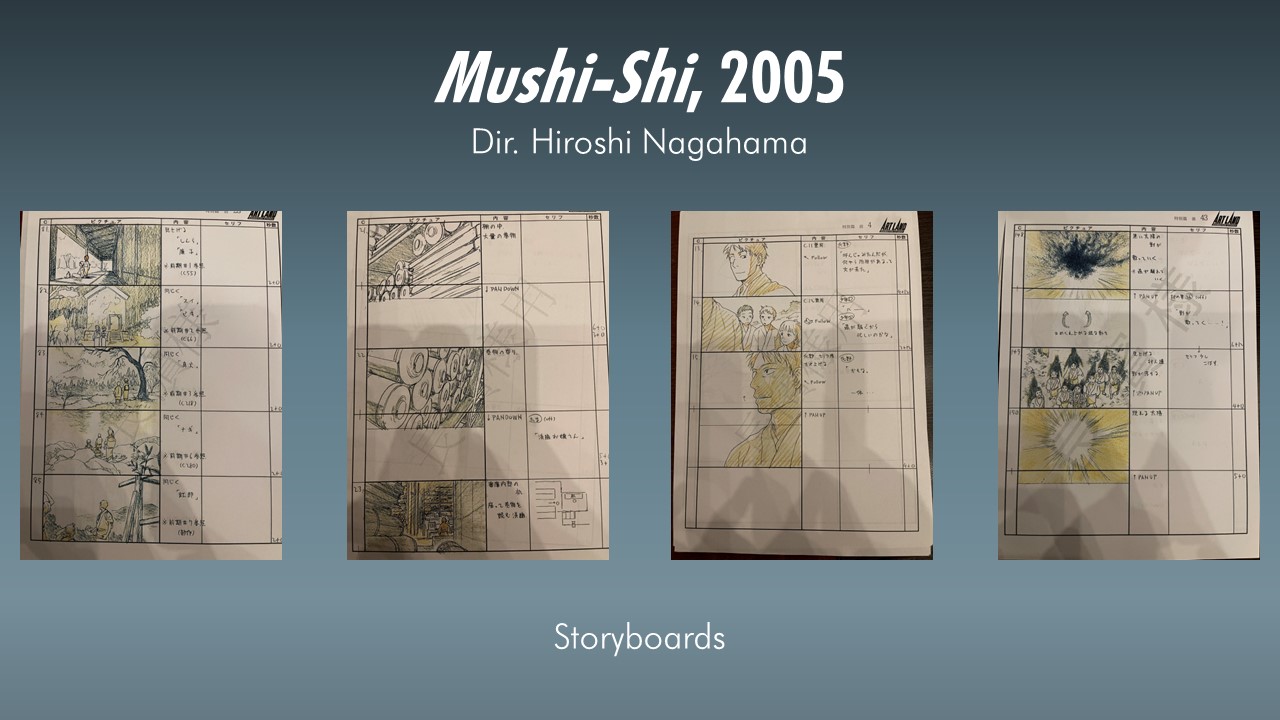
You also brought some storyboards with you today. A good time as any to ask: Some vocal manga fans complain whenever an adaptation veers the slightest bit away from the original material. What’s your opinion about it? Should an adaptation stay as true as possible to the source material?
Hiroshi Nagahama : I see. Of course, I understand the manga readers’ preferences. Manga, as an art form, lets you control the pace as you’d like, and your feelings about a scene are your own, so every little thing does matter more in that sense. You can’t have that in an animated adaptation; it’s the director’s job to decide. Our role is to understand the core of a scene and relay it as best as we can, even if we do have to deviate a bit sometimes. And even then, we have to stay true enough! In my opinion, it can’t really be helped. I always do my best to follow what I feel are the original intentions, though.
To put it another way, since I’m a big fan of American comics… You know about Wolverine and Hugh Jackman, right? Well, ain’t he a bit too tall to be playing this role? The suit is different, too, right? It doesn’t really matter in the end, as he puts his all into becoming the character. Nowadays, you can’t imagine Wolverine without Jackman. It’s the same with all adaptations.
To get back to the storyboards, maybe it’s the first time people in the audience see an anime storyboard. As you can see, there’s a column to draw the scenes, a column for additional instructions, and, finally, a column for the dialogue. In this dialogue box right here, you drew a little map instead. Can you tell us what it is about?
Hiroshi Nagahama: It’s something I drew to make sure I kept the characters’ positions as accurate as possible since this scene relies a lot on camera work. Earlier, when I said I’d keep as many details as I could, this sort of thing is what I was talking about. Basically, the start of this scene is an anime original. We intended to surprise the mangaka with it. Apparently, it felt so natural that even the big fans didn’t notice that we had added it! All this to say once again: We can deviate a bit as long as we do our best to understand the original work’s soul.

Next, this would be… Compositing and coloring instructions, right?
Hiroshi Nagahama: Yes. Basically, we always do some testing to define how we’re going to be handling different times of day or weather.
Now, about The Reflection. Since you brought up American comics and superheroes, it’s only fair to talk about it. It’s your original work, and you had the privilege of working with Stan Lee to create it. Is that right?
Hiroshi Nagahama: Of course, it’s a really important piece of me. Stan was an incredible person. I remember him imitating the way we Japanese talk, the “ano, eto” words. It was really cute! Ms. Satake was also a part of it. The three of us really enjoyed working together, almost like a big family. Stan has sadly passed since, and I’m always sad when I think I won’t be able to show him my future plans for the series. We built this series together, but he was already quite old when we started. He knew time was of the essence, of course, so this story starts off with quite a bang! The beginning is dense on purpose to let us dilute it all over time. There’s still so much I want to do with this world, these characters!
The voice actors were all instructed about every facet of the character they played, for example. But it’s going to stay a secret until we start to work on it once more! I even went as far as not telling the actors about the other characters! I’ll do my best to resume work on it sometime. I’m just a bit too busy to continue it just yet…
We’re running out of time, but can we talk about Uzumaki, briefly…
Hiroshi Nagahama: Well, as you can hear in the trailer, Uki Satake is going to voice Uzumaki’s heroine, Kyrie Goshima! M. Umakoshi will be joining us on this project as well! Despite him being very busy on My Hero Academia, he contacted me to make sure he’d be able to work with us on it. I’m glad he could free some time to work on Uzumaki. Well, it’s going to be quite a disgusting story, but M. Ito is able to bring out beauty against all odds. I’m striving to showcase this contrast through this adaptation.
Sunday panel with Hiroshi Nagahama and Uki Satake
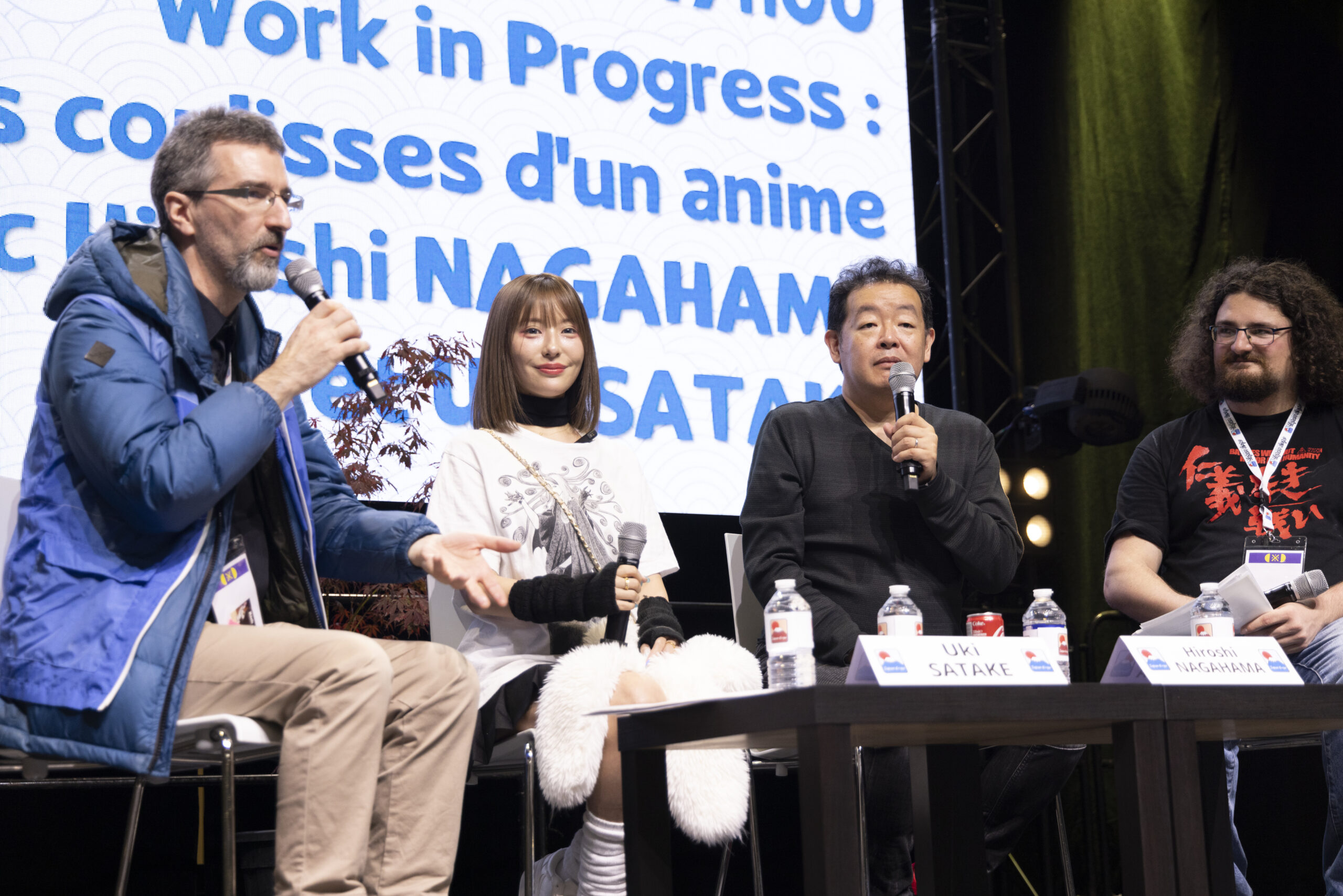
As we got this opportunity to have a director and a voice actress on stage, I would like to hear about the relationship between them during an anime production in Japan.
So the first thing I would like to know is,how does the casting take place? Is the director choosing the actors? Are actors being offered the roles?
Hiroshi Nagahama: There are various ways to process a casting. It can be through auditions, or we can be requested to employ a precise person. In my personal case, while working on an anime, I have ideas about the voices I want for the leading roles coming out in my head. I discuss it with the producer to give my opinion, and I usually manage to get the exact voice actors I want.
Uki Satake: For my part, I generally receive an offer for a tape audition. Then, they choose the character whose personality my voice fits best, and I finally take an audition. For example, as I did a great job on QT, if there’s a robot-like character, I’ll be able to play it well, and I’ll be chosen.
Hiroshi Nagahama: Most productions set up auditions. I’m sure you know very famous voice actors and actresses, but even they take auditions, even if everyone knows them.
Uki Satake: I was the first surprised to be chosen as QT. I can’t give any names, but when I saw the people who took the audition with me, there were people much more famous and with a greater career than me.
Once the actors have been chosen, the next step in the work between voice actors and directors, the most important part, is the recording, the “afureco” (After-recording). Can you explain to the audience what exactly the “afureco” is, what happens at this moment?
Hiroshi Nagahama: Usually, in a recording studio, the voice actor is in a soundproofed box, like a karaoke box. There’s a screen with all the lines passing. On the other side of the box, there’s a glass behind which there is the director and the audio engineer. They communicate with the actor through a mic linked to the inside of the box. They give instructions like “speak louder here,” “speak this way,” etc. And so the voice actor adapts following these instructions.
Nagahama asks if anyone in the audience has already experienced afureco, and nobody raises a hand.
Of course, nobody, this method is so particular. (laughs) It’s the opposite of this place, Japan Expo. Everything is made not to let even the most subtle sound escape. The hush is quite heavy. It is very difficult, if you have the opportunity to try, do it. Even the smallest sound you make will be amplified, because there’s no other sound at all. I’m not so used to it myself; it’s very weird to work under these conditions. I think Ms.Satake is a true veteran regarding this method.
Uki Satake: There are schools to become a voice actor, but personally, I learned by myself. I went to these kinds of places to get to know more about it. During a recording session, it can happen that there are 20 actors in the same room but with only 3 or 4 mics available. Fights about who uses which mic can occur. We have to be very careful about what everyone says; we have to behave well. Plus, we have to eat enough because if we’re too hungry, the stomach sounds might reach the mics. When we’re about to start recording, we close all the doors, and we turn off the air conditioner because of the sound. But it’s very hot in there, so once it’s done, the first thing we do is to open everything and turn on the air conditioner again. We also have to wear clothes that don’t create friction sounds, as it can have an influence on the sound as well. For example, the clothes I’m wearing today are forbidden.
During this step, the lines pass on the screen, but is there a possibility that actors improvise a little? Either as a request from the director or an initiative of the actor.
Hiroshi Nagahama: Of course, there are clearly written lines that are said the correct way, but for example, when there’s character A and character B clearly talking, we can also have “crowd talking” behind, with no precise line. It can happen when there are many students, people waiting for the train, or just having a little chat while resting. At this moment, the director just lets the voice actors and actresses improvise small lines to create the noise in the background.
Uki Satake: I think that you French people would be better at creating crowd noise than we Japanese people since we are too quiet. (laughs)
You both started to work together on The Reflection. How did you meet, and why did you choose Ms.Satake to dub on this anime?
Uki Satake: The truth is the first time we met, I wasn’t a voice actress yet. Or maybe I was, but I was just starting. It was right before my role in Hunter X Hunter, which was my first work ever. I met Mr. Nagahama and told him I wanted to give my best in this job. The way I met him is actually interesting. He was the guest of a famous TV show about anime. I was an announcer and a fan of Mushishi, so I took the chance to tell him all the esteem I had for his work. So, I first met him as a fan.
Since this time I met him on the TV Show, we met several times. It was very important to me, and it looked like fate had brought us closer. That’s how we started to work together.
Hiroshi Nagahama: It wasn’t like I wanted to work with her since the time we first met and had fun. I just told her to keep it up at work. Then, we met again and again, and one day, I was working on a project on which I thought she would fit perfectly. It was the first time we worked together. It’s not because she was an acquaintance of mine that I employed her directly. She first had to get better and give her best. When we were doing the casting for The Reflection, I saw a live performance of the band called Nine, of which Ms.Satake is a member. I thought it was so impressive. They looked like a superhero team, and the way they put on the show was impressive. I started to think I should organize a casting for her.
Uki Satake: I really had a lot of great opportunities in my career. During the signing sessions today, a lot of people spoke to me in Japanese. I want to say to everybody: If you’re learning Japanese, and if you have a dream to come to Japan, work in Japanese, and become a voice actor or actress, please try it! You don’t know when the opportunity will come!
Hiroshi Nagahama: I think we should express the things we find beautiful. Today, I saw a wonderful show performed by tonari no Hanako. I thought it was great, but this fact is not enough. Maybe I’ll use some elements of this show for my next projects. In the case it remains in my mind and stays with me, it’s going to connect to something else. I’m always so happy to discover new things and to talk with people like you all at those events. It helps me to grow up as an artist and a person. It’s the same for you; every new experience should nourish your mind and help you take a step in life. I’m sorry, I can’t explain it very well. I know it’s hard, but I wanted to tell you that.
I’d like to come back to The Reflection. How was it to record together? Do you have some anecdotes to share about the recording? Did you give some precise instructions?
Hiroshi Nagahama: Clearly, the most impactful memory is that I worked with Stan Lee.
Uki Satake: Personally, thanks to this anime, I had the rare opportunity to promote the series abroad. As a voice actress, it truly was a big chance. Even though most Japanese anime productions are made for Japanese people, Mr. Nagahama also thinks about people from England, America, and all around the world. It’s not just about Japan.
Hiroshi Nagahama: Also, as Ms. Satake’s first name is Uki, there’s a character in The Reflection who’s called Uki, and all the members of Nine have their own characters this way, even if their age is obviously different since they are students in the anime. It’s kinda rare for me to use the name of an actor for the character.
Uki Satake: Another great memory was the time we went to an event in Los Angeles. It was as crowded as here. We wore costumes from The Reflection, and when we appeared on stage, the crowd’s reaction was incredible. Everyone was shouting, “I want to take a picture!”. I actually never witnessed something like that, even in Japan. This is a very fun memory for me.
We mentioned earlier that Ms. Satake is the voice of QT in Space Dandy, an anime created by Shin’ichirô Watanabe. I would like to know what the differences are between Mr. Watanabe and Mr. Nagahama if there is any clear difference.
Uki Satake: When I took the audition for QT, I made a big mistake in a line. Instead of saying, “San paasento!” [TL: 3 percent], I said, “San pa!”. When Mr. Watanabe heard that, he chose me because he thought it was perfect for this role to employ someone who makes mistakes. Because I was selected based on this mistake, he told me, “I hate it when people act rigidly. Speak just like you really do.”. I was just debuting in the industry at that time, so I think Mr. Watanabe was a great mentor for me.
Regarding Mr. Nagahama, you can see he’s so passionate about his job. But personally, because of the relationship we have and how he helped me through my life, I would say he’s almost like someone from my family. He humanly took care of me in many ways. All he can talk about is work, but he’s manifesting so much humanity. He taught me countless things. He is a true mentor of my life, and for that, I’m very grateful.
Hiroshi Nagahama: Because we’re very similar, we often hang out together. It really is not like with many other voice actors and actresses, with whom when the recording is finished, it just happens to be “See you next time!” and everyone gets home. With Ms.Satake, we see each other outside of working hours, and we talk about various topics. Each time I’m invited to an event, I tell her, and we try to go together so that we have more fun, like we did today.
Uki Satake: As he said, we try as often as possible, if my schedule allows it, to be together on trips to events like this so that we can talk about our job together on stage. That’s why we’re here today in front of all of you. I hope it’s interesting!
Hiroshi Nagahama: I don’t like only being praised, so I’m going to give my own opinion. The connection between us is not just about me. Us talking and you coming here, sitting and listening to us is a mutual interaction. I only realize it when I come to this kind of event. Even in France, people who don’t know anything about making anime come to listen to us. To have the experience of seeing everyone in front of my eyes is a real blessing.
Uki Satake: Do you know about Uzumaki? Are you longing for it?
*The crowd answers yes, making Ms.Satake very glad*
Hiroshi Nagahama: Actually, I wanted to show you a small teaser of Uzumaki, but I don’t think I can. And it seems like we’re running out of time. But I hope next time will be the right occasion to show you Uzumaki on the big screen!
Uki Satake: It’s my first time in France. Orléans is a beautiful city. Everyone is so heartwarming and kind to us. I am so delighted to have met all of you. Thanks again for your interest in the shows I act in, in Uzumaki, and in all of Mr. Nagahama’s works. I had two wonderful days here. Thank you very much, France! Je t’aime!
Thanks go to Hiroshi Nagahama and Uki Satake for their time, Japan Expo for trusting us, as well as Fabrice Renault for his contribution to make these panels happen.
Interpreter Fabrice Renault.
Translation Florian Abbas and Loïc André.
Like our content? Feel free to support us on Ko-Fi!
You might also be interested in
Benoît Chieux, a career in French animation [Carrefour du Cinéma d’Animation 2023]
Aside from the world-famous Annecy Festival, many smaller animation-related events take place in France over the years. One of the most interesting ones is the Carrefour du Cinéma d’Animation (Crossroads of Animation Film), held in Paris in late November. In 2023,...
Colors and cinematography in anime – Interview with Death Note director Tetsurô Araki
As the director of cult works such as Death Note, Highschool of the Dead, and Attack on Titan seasons 1 to 3, Tetsurô Araki is one of the biggest names in the anime industry. In recent years, he has had many occasions to get his name out, from the movie Bubble to...
Akira stories – Katsuhiro Otomo and Hiroyuki Kitakubo talk at Niigata International Animation Film Festival 2023
Among the many events taking place during the first Niigata International Animation Film Festival was a Katsuhiro Otomo retrospective, held to celebrate the 45th anniversary of Akira and to accompany the release of Otomo’s Complete Works. All of Otomo’s animated...

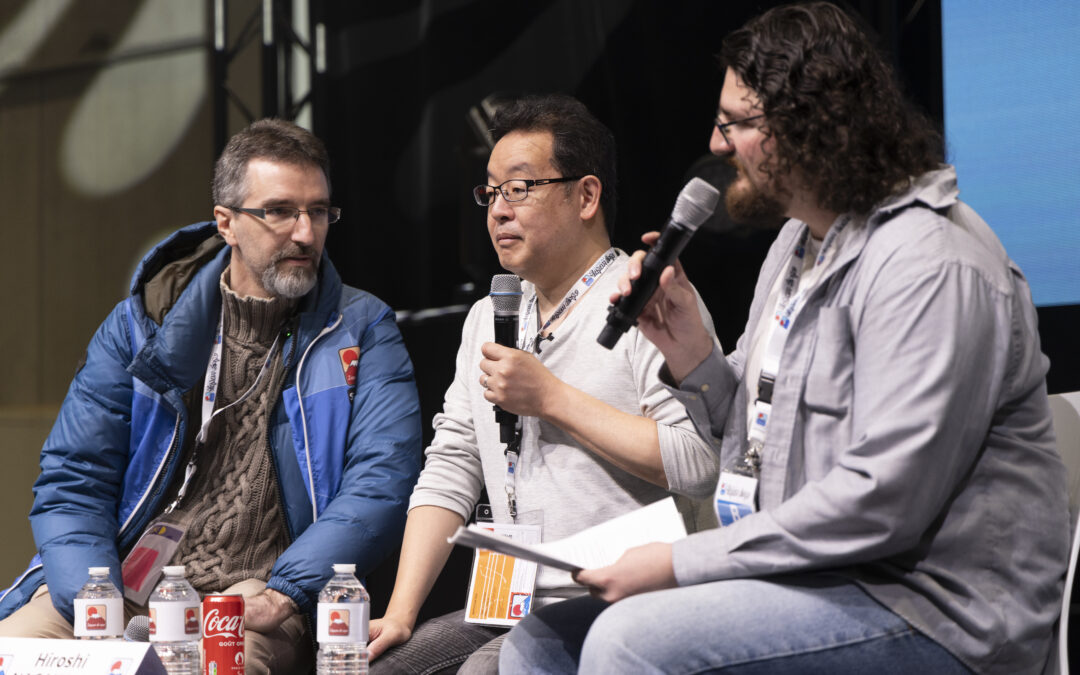

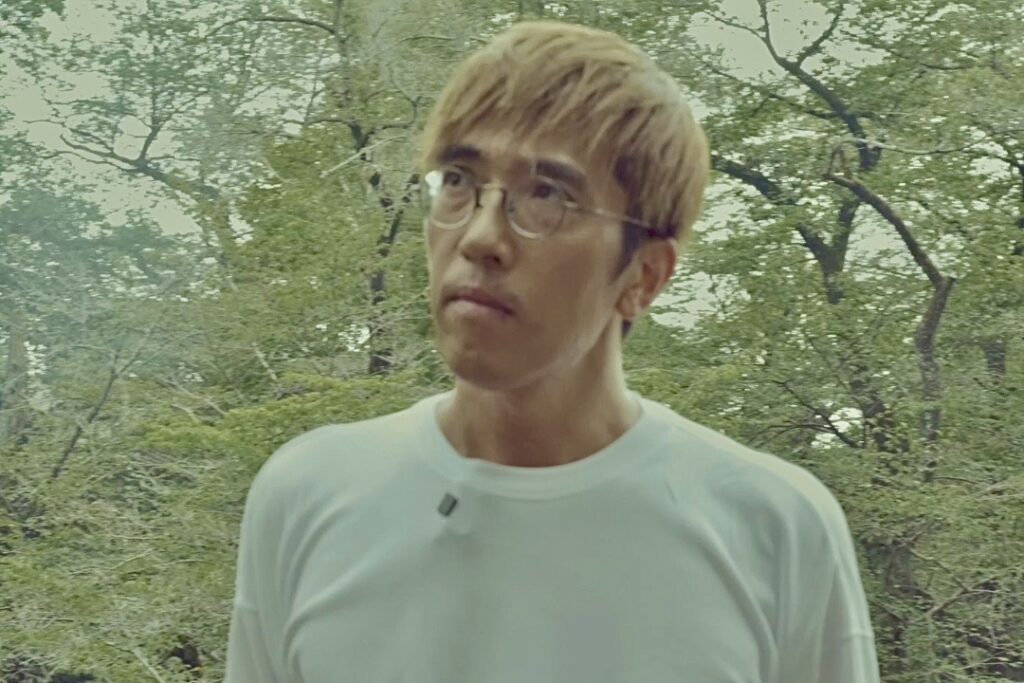

Recent Comments